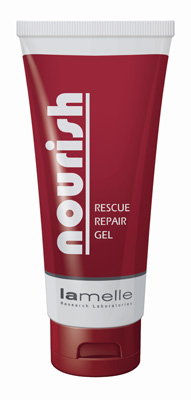Mountain biking is probably one of the most fun ways to become fit, lose weight, spend time with your better half or family, and spend time outdoors. It is also a great stress buster! When you’re comfortable, you enjoy your riding and you want to ride more often. When you’re uncomfortable you want to sell your bike! Here’s some women-specific advice to help you find optimal comfort.
By Dr Merchen Naude

While you can expect wind-in-your-face-sun-on-your-back fun, you must expect some discomfort when you tackle your first few rides. Don’t worry, it’s just temporary and it will ease and fade completely with some conditioning and set-up correction.
Discomfort and a bit of stiffness in your hands, neck, shoulders and legs is to be expected if you are starting out. If it doesn’t fade after a few rides (6-10 rides) then you need to examine your set up and gear.
SET-UP
Correct set-up (your position on the bike) is the most important factor to ensure a comfortable ride. You don’t want to be too stretched out or too hunched up. Your hips shouldn’t rock from side to side when pedalling (caused by a saddle too high) and your knee-bend angle shouldn’t become too acute (caused by a saddle too low). Good bike shops will get your set-up sorted – before you take your bike home. They’ll either set you up using their own in-store expert/system, or will get your set-up a close as possible to what they think is ideal and suggest you visit a set-up expert.
It costs between R500-R1500 for a professionally done set-up and it takes 45-90 minutes. Don’t see this as an extra cost, rather see it as an investment in your comfort and happiness as a mountain biker.

GEAR
You have three contact points with your bike – backside, hands and feet. Let’s take a look at each one separately:
Backside: You WILL feel bruised and sore in your saddle contact area initially. You’re not used to sitting on a saddle so it’s normal. It will pass…I promise! After a few rides you’ll become conditioned and this discomfort will become a distant memory. If it doesn’t improve, then you may need a different saddle.
Most women find women-specific saddles to be just fine. But not all bikes are sold with a woman-specific saddle. These saddles are generally wider (women tend to have greater sit-bone width than men). Because we’re all different, one saddle may not be best for you, while another is just right.
The ideal saddle should be:
- Wide enough so that your ‘sit-bones’ are supported by it, which minimises pressure your sensitive bits
- Shaped to minimise chaffing and pressure – usually with a complete cut-out or a groove down the centre
- Not too soft! Although you may think soft = comfort, it can actually create more discomfort due to you ‘sinking into it’. A firmer saddle will ensure you ride on top of it and not ‘in it’.
Good bike shops will offer you sample saddles to try if you’re unsure which is best for you.

Shorts: Snug-fitting cycling shorts are essential for saddle comfort! Buy a tight-fitting women-specific model which will have been designed for a woman’s physique. The padding design for women’s shorts differs from that of men’s (for obvious reasons), but the actual Lycra cut and styling also differs. You could wear generic cycling shorts, but don’t expect optimal comfort.
Bib-shorts are the best type of shorts if you’re serious about your riding and ride often. They stay in place better than regular shorts, which means a lower risk of chafing.
Don’t be afraid to use chamois cream on the padding. It can mean the difference between you looking forward to tomorrow’s ride or looking for excuses not to ride…
Oh and NEVER wear anything under your cycling shorts, especially not underwear. This extra layer will cause friction which can be very uncomfortable.
Hands: Once your set-up has been done properly the width, style and angle of your handlebars should be spot-on. This just leaves you making sure your grips and gloves suit you. Heavily padded gloves may offer cushioning, but they can reduce the ‘trail feel’, which can affect your handling. Your hands will also become conditioned to the pressure they come under from riding. Initially, short-finger gloves may be best so that braking and gear shifting can be more positive. Long-finger gloves affect your ‘touch’ sense but obviously protect you better in the case of a crash or a tree-bark scrap on a tight trail. Make sure your gloves are snug, but not tight.
Feet: Avoid socks with thick cushioning. Rather go with a thinner sock as they’re cooler and offer a more direct connection between your foot and pedal. Find a snug-fitting sock, preferably cycling-specific.
If you’re going to ride regularly, then invest in a pair of mountain bike shoes and clip-in pedals. The shoes have stiff outter soles to ensure all your energy goes into moving your bike forward and having your feet connected to your pedals improves pedalling efficiency (because you can pull up and push down) and safety (your feet won’t slip off on bumpy descents)…
Various insoles are available to deal with ‘problem feet’ and can improve comfort. When doing a professional set-up, this contact point should feature prominently.
Sports bra: It is important to use a sports bra that fits well. It doesn’t require the same support as for impact sports, but mountain biking can be quite rigorous, especially if you ride technical trails. Bumping up and down may stretch the muscles and skin of the delicate breast area. If you are racing, you may need to run with your bike for short periods too, so rather be prepared.
Skin: Hours and hours of mountain biking will definitely benefit your waistline, but  the hours spent in the sun will be hard on your skin. Always use a good sunscreen, and apply often (as much as every two hours.) Sunscreen wipes can be more practical on long rides. Or stash a small tube of sunscreen in your cycling jersey pocket. Sunscreen lip balm will protect you against dry chapped lips – there is nothing worse than putting lipstick on sore, dry lips! There are also various after-sun products to protect against and neutralise sun damage (e.g. Lamelle Nourish Rescue repair gel and Heliocare Ultra capsules). Moisturise well after riding. Hydrate well by drinking lots of water.
the hours spent in the sun will be hard on your skin. Always use a good sunscreen, and apply often (as much as every two hours.) Sunscreen wipes can be more practical on long rides. Or stash a small tube of sunscreen in your cycling jersey pocket. Sunscreen lip balm will protect you against dry chapped lips – there is nothing worse than putting lipstick on sore, dry lips! There are also various after-sun products to protect against and neutralise sun damage (e.g. Lamelle Nourish Rescue repair gel and Heliocare Ultra capsules). Moisturise well after riding. Hydrate well by drinking lots of water.
Eyes: Cycling eyewear isn’t complusory gear, but it should be. Because it wraps around your face, it protects your eyes from airborne debris, branches, and also from damaging UV rays and glare. Photochromic lenses cost more, but are worth it. They adjust tint according to the light conditions and can enable you to see trail detail much better than dark eyewear. Avoid Polarized lenses as they tend to distort trail detail in the shade.
Illness/allergies: As you will be spending more time outdoors, allergies may flare up. Dry mucous membranes and the stress of training may also make you more susceptible to colds and various infections. If you experience any systemic symptoms like an increased heart rate, fever, muscle and joint pains or shortness of breath, it is wise to refrain from riding for a few days. Hydrate well, rest and take anti-oxidants.
Consult a sports doctor if you do not begin to improve within 48hrs of resting, or if you become drastically worse. Anti-histamines and cortisone nasal spray may be of value if you suffer from severe allergies. As you get better and want to start training again, take it easy for the first few days. Increase your intensity and duration slowly over a period of a week or two to prevent a rebound infection.
Period: Some women may wonder if it is advisable to continue riding during your period. You would be surprised that you would actually feel better if you continue with light training. Exercise may even decrease the severity of period pain!
Mineral supplementation: Of some concern in female athletes is Iron deficiency. If you are training hard, menstruating heavily and have a restricted diet, you may be at risk.
“Iron does a lot more for you than just red-blood-cell production,” notes Dr. Laura Garvican, a University of Canberra researcher. “It’s also involved in energy metabolism, immune function and even brain processes.”
If you are constantly tired, forgetful, and notice hair is falling out, have your Iron level checked!
Calcium and Vitamin D levels are also very important, and usually low in female athletes. You will be amazed how much better you will feel with if your Vitamin D level is optimal.
Other blood levels I regularly check in my female athletes are FBC, s-Cortisol and DHEA, hormone and testosterone (if applicable) and Thyroid function. Have these levels checked at a sports doctor, as the levels needed for an athlete may be higher than normally acceptable values.
 Dr Mérchen Naudé is a Sports Physician at Fore Fitness and Health Sports Practice, Pretoria. She is an avid triathlete and mountain biker. She has completed numerous mountain biking events and stage races and can be reached on 012 753 1257 or merchensport@gmail.com
Dr Mérchen Naudé is a Sports Physician at Fore Fitness and Health Sports Practice, Pretoria. She is an avid triathlete and mountain biker. She has completed numerous mountain biking events and stage races and can be reached on 012 753 1257 or merchensport@gmail.com

All rights reserved.

